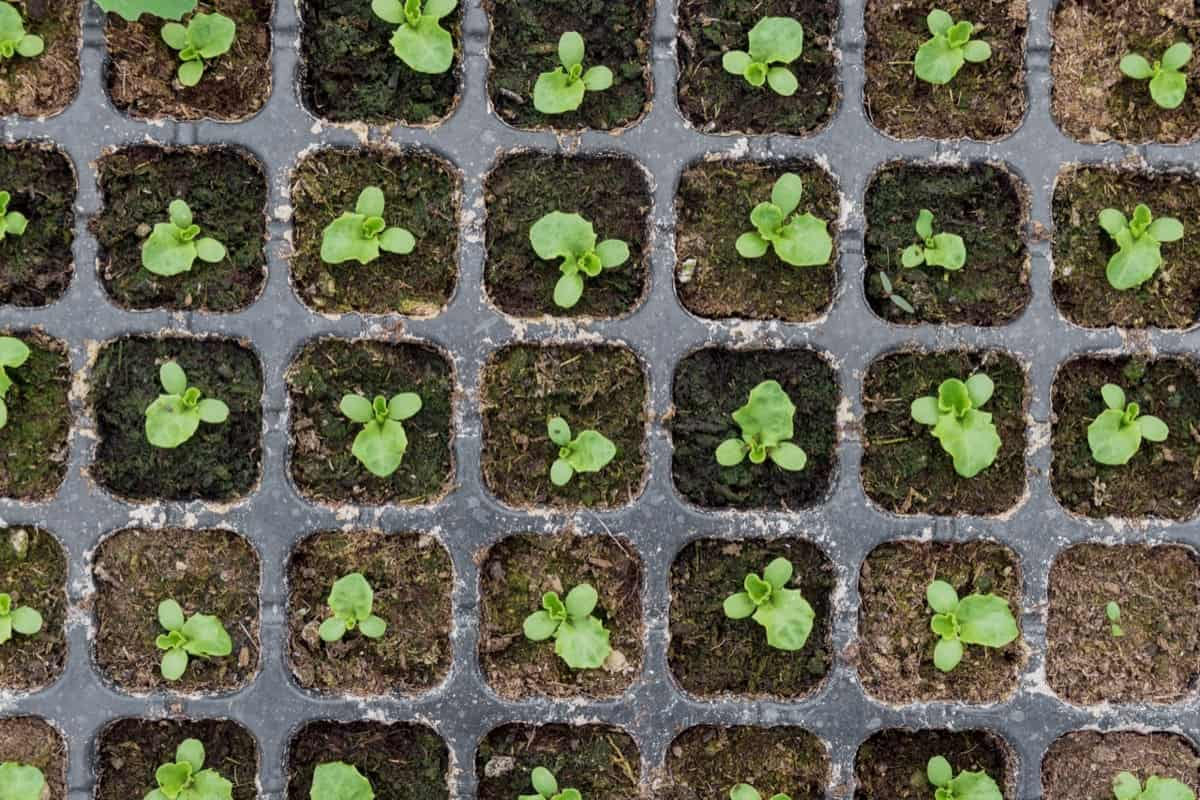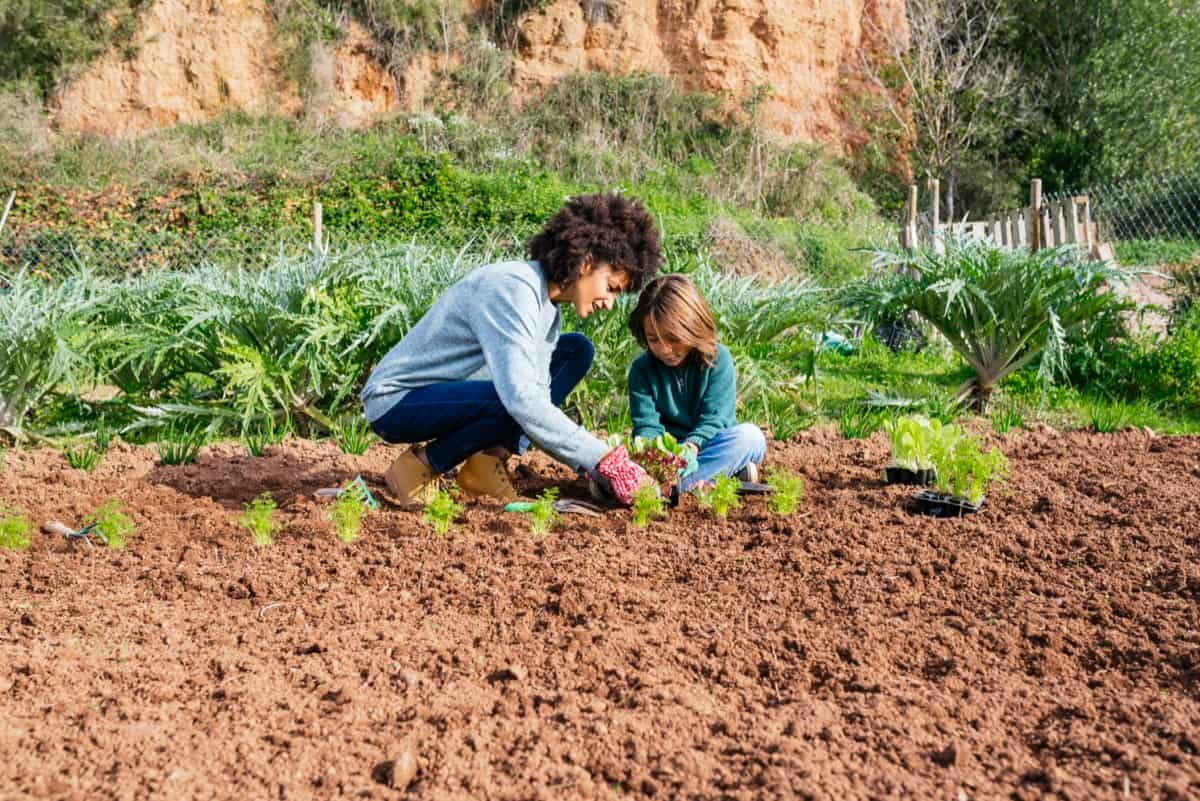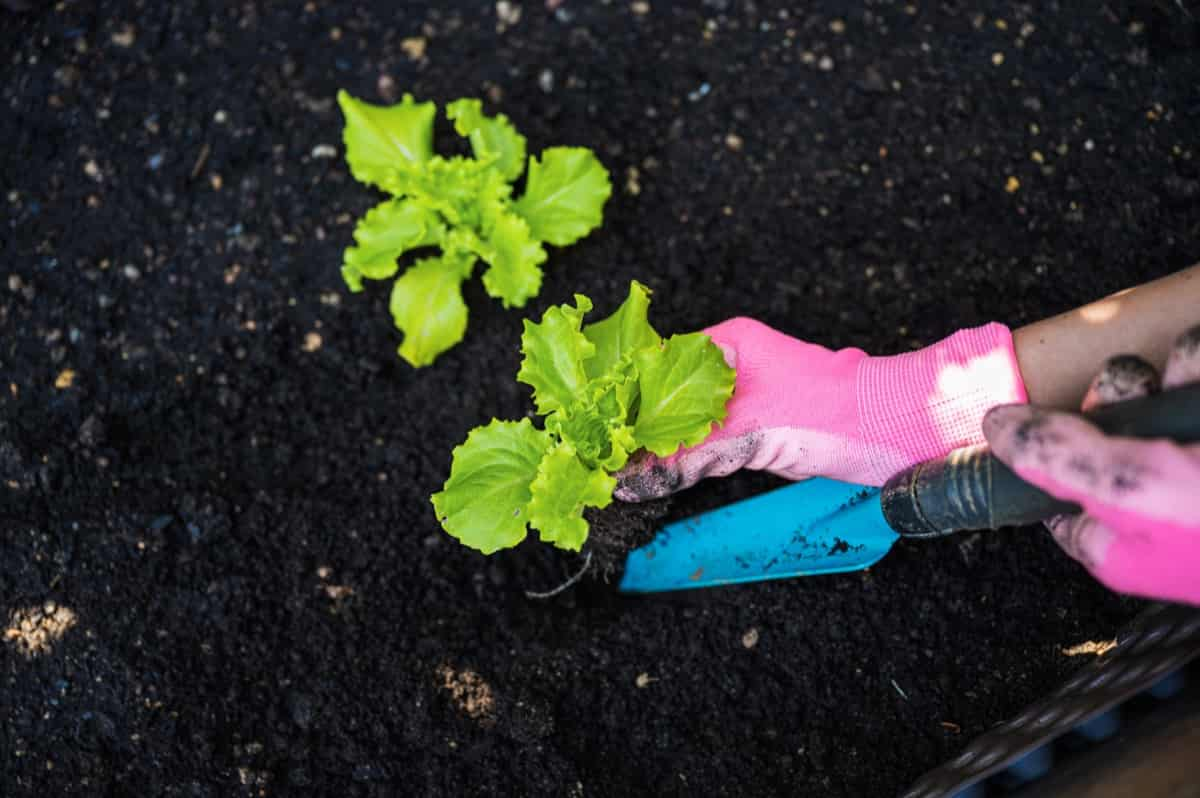Growing lettuce is a rewarding task for novice and experienced gardeners, with the journey starting from a simple seed and resulting in a fresh and crisp harvest. It’s a process that requires care, understanding, and skill, particularly in the critical stage of transplanting lettuce seedlings.

As you embark on this gardening endeavor, you’ll need to familiarize yourself with essential points such as transplanting lettuce seedlings into pots, when to separate lettuce seedlings, lettuce transplant spacing, and how to transplant seedlings after germination. This comprehensive guide will walk you through transplanting lettuce seedlings effectively, ensuring they mature into thriving, healthy plants.
When to Transplant Lettuce Seedlings Outdoors
The ideal time to transplant lettuce seedlings outdoors is when they have developed at least two sets of true leaves. This usually happens two to three weeks after germination. The first set of leaves is the seed leaves, also known as cotyledons, which look different from the true leaves. The true leaves have the same shape and texture as the leaves of a mature lettuce plant. Once the second set of true leaves appears, this is a clear sign that the seedlings have grown strong enough to withstand the outside environment.
Ideal Time for Transplanting Lettuce Seedlings
The ideal time for transplanting lettuce seedlings often depends on the variety of lettuce and the local climate. Generally, lettuce prefers cooler temperatures, with the optimal range being between 60-65 degrees Fahrenheit. Therefore, the best time to transplant seedlings is in early spring or late summer when temperatures are milder. Lettuce seedlings can tolerate light frost, but hot temperatures can cause them to bolt or go to seed prematurely, producing a bitter taste. Pay close attention to the weather and time you transplant accordingly to avoid these issues.
Signs That Lettuce Seedlings Are Ready for Transplanting
There are a few signs to look for that indicate when lettuce seedlings are ready for transplanting. First, they should have at least two sets of true leaves, as previously mentioned. Second, they should have strong and sturdy stems. Third, if you gently tug on the base of the seedling, it should resist. This resistance shows that the roots have developed sufficiently and can sustain the plant after transplanting. Finally, you’ll need to consider the steps in transplanting seedlings and ensure you’re prepared to carry them out properly.
In case you missed it: 10 Common Problems With Lettuce: Treatment and Solutions

Transplanting Lettuce Seedlings Indoors
Transplanting lettuce seedlings into pots indoors is a great way to get a head start on the growing season, especially in areas with shorter growing seasons. Use high-quality potting soil and ensure the pot has ample drainage holes to prevent waterlogging. The process involves making a small hole in the soil, carefully placing the seedling, and gently filling it without damaging the roots. It’s also essential to remember the lettuce transplant spacing: seedlings should be spaced about 8-12 inches apart to give them room to grow.
Best Conditions for Transplanting Lettuce Seedlings
The best conditions for transplanting lettuce seedlings involve a combination of optimal temperature, soil, and light conditions. As previously mentioned, lettuce prefers cooler temperatures. Therefore, aim to transplant your seedlings on a cool, overcast day to reduce transplant shock. An overcast day also ensures less evaporation, and the seedlings won’t be immediately exposed to intense sunlight. Furthermore, the area where you’re transplanting the seedlings should have access to at least six hours of sunlight daily.
How to Prepare Soil for Transplanting Lettuce Seedlings
To prepare the soil for transplanting lettuce seedlings, start by clearing the area of any weeds or stones. Then, incorporate a generous amount of compost or well-rotted manure to improve the soil’s fertility and drainage. Finally, water the soil thoroughly for a few hours before transplanting. This will ensure the soil is moist and welcoming for the seedlings, providing a smooth transition for the roots.
Techniques of Transplanting Lettuce Seedlings
When transplanting lettuce seedlings, the key is to be gentle and patient. Start by watering the seedlings in their container a few hours before transplanting. This makes it easier to remove them without damaging the roots. Next, make a hole in the prepared soil that’s deep enough to accommodate the seedling’s root ball. Place the seedling in the hole and gently fill it in, ensuring that not bury the stem. Remember to observe the correct lettuce transplant spacing to ensure each seedling has enough room to grow.
In case you missed it: 12 Lettuce Companion Plants for Better Growth and Yield

Common Mistakes to Avoid When Transplanting Lettuce Seedlings
While transplanting lettuce seedlings, several common mistakes can hinder the process. One is transplanting the seedlings too close together. Proper lettuce transplant spacing is crucial for healthy growth. Another common mistake is not watering the seedlings after transplanting.
This step is critical to help the plants settle in and recover from the shock of transplanting. Overwatering is another issue that can lead to root rot and other diseases. Lastly, transplanting seedlings during the hottest part of the day can lead to wilting and transplant shock. Always aim for early morning or late evening when the sun isn’t as strong.
Transplant Shock in Lettuce Seedlings: Prevention and Recovery
Transplant shock can cause wilting, slowed growth, and in severe cases, plant death. To prevent transplant shock, avoid transplanting seedlings in extreme weather conditions. Also, try not to disturb the roots too much during the transplant process. If your seedlings experience transplant shock, recovery methods include providing adequate water, ensuring they have the proper nutrients, and protecting them from harsh environmental conditions until they recover.
Aftercare Tips for Transplanted Lettuce Seedlings
Aftercare is an essential part of the transplanting process. In the days following the transplant, ensure the lettuce seedlings are well-watered but not waterlogged. Look for any signs of transplant shock and address them promptly. Keeping the area around the seedlings weed-free is also crucial, as weeds can compete with the seedlings for nutrients and water.
In case you missed it: Frequently Asked Questions About Growing Lettuce from Seed to Harvest

Additionally, depending on the specific type of lettuce you’re growing, you may need to offer some form of shade to prevent bolting in warmer weather. A balanced vegetable fertilizer can also help the seedlings establish quickly and grow robustly.
Conclusion
Successfully transplanting lettuce seedlings requires an understanding of the right time, the right conditions, and the correct steps involved in the process. This includes recognizing the signs that seedlings are ready for transplanting, providing them with ideal growing conditions, and ensuring the soil is well-prepared.
Proper transplanting techniques are crucial, as is avoiding common mistakes that could jeopardize the health of your plants. Awareness of transplant shock and how to recover from it is vital for the survival of your seedlings. Finally, aftercare is the last step in ensuring your lettuce seedlings grow into strong, healthy plants, providing a bountiful harvest.
- Feed Your Flock for Less: Top 10 Tips to Save on Chicken Feed
- Ultimate Guide to Ossabaw Island Hog: Breeding, Raising, Diet, and Care
- Hatching Answers: The Top 10 Reasons Your Chickens Aren’t Laying Eggs
- Eggs and Economics: Breaking Down the Cost of Raising Backyard Chickens
- Defend Your Greens: Proven Methods to Keep Iguanas Out of Your Garden
- Ultimate Guide to Cinnamon Queen Chicken: A Comprehensive Guide for Beginners
- Ultimate Guide to California Tan Chicken: Breeding, Raising, Diet, Egg-Production and Care
- Ultimate Guide to Marsh Daisy Chicken: Breeding, Raising, Diet, and Care
- 10 Types of Chicken Farming Businesses You Can Start for Profits